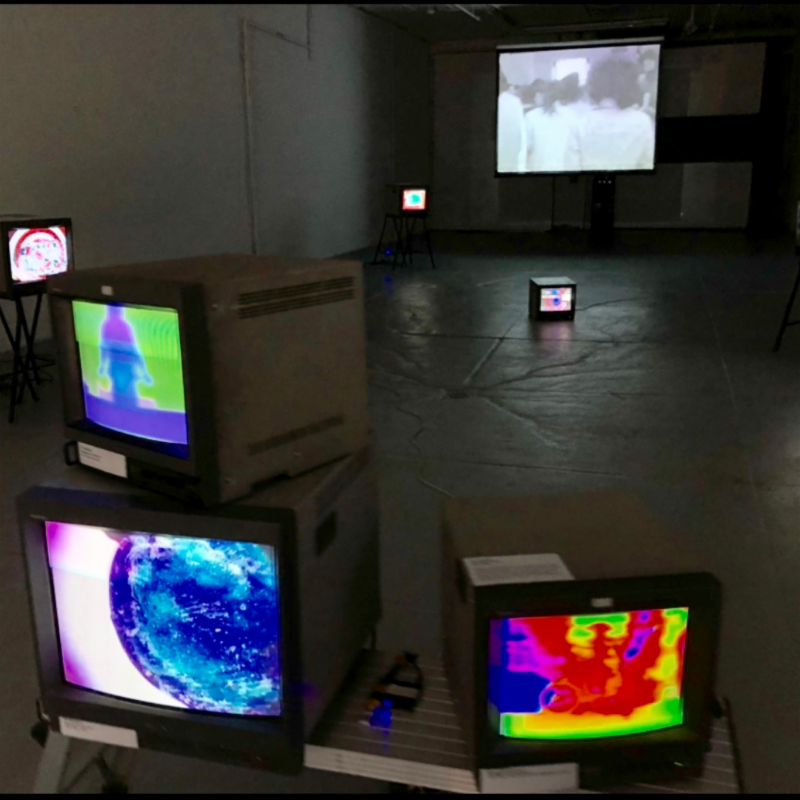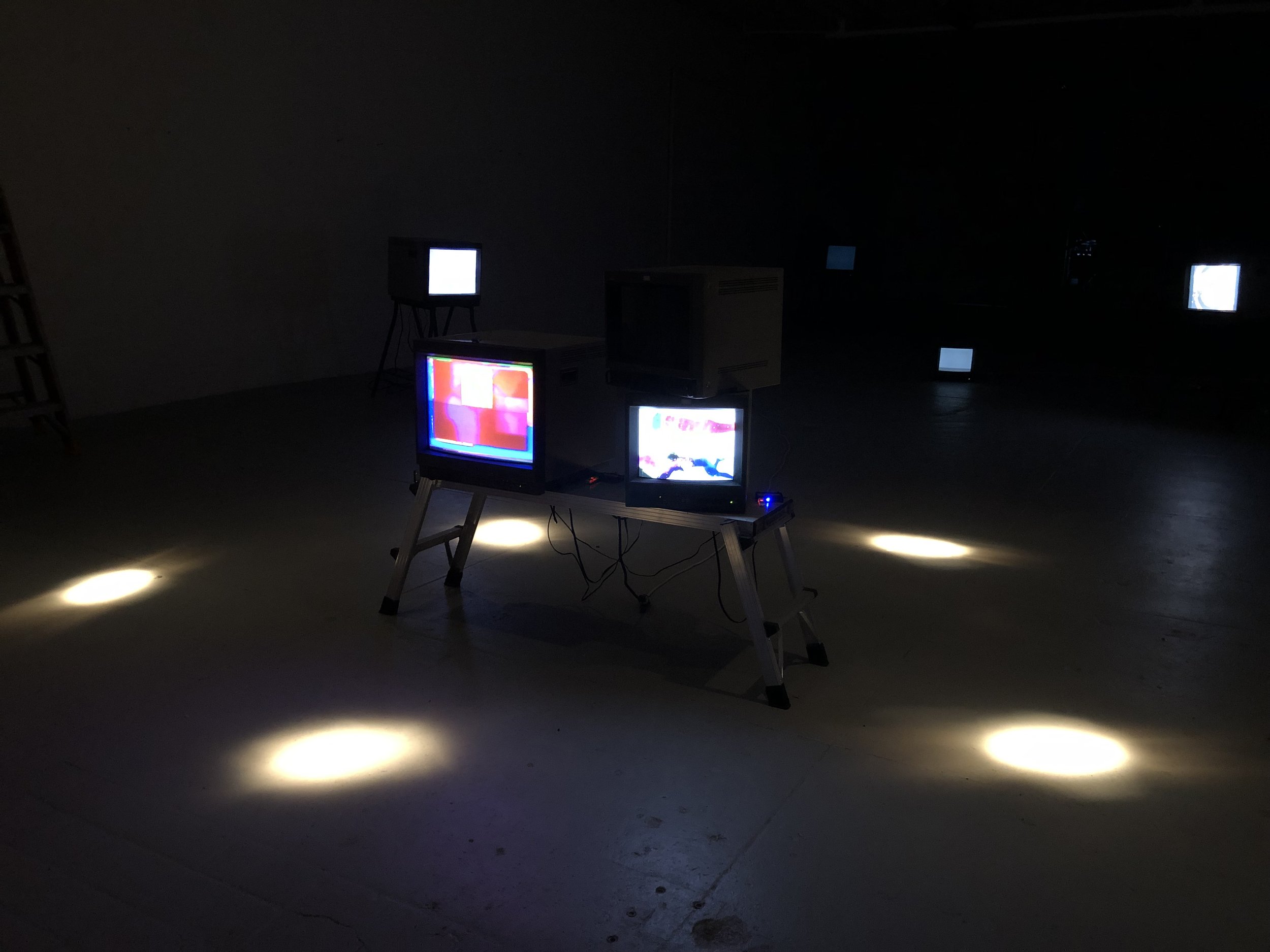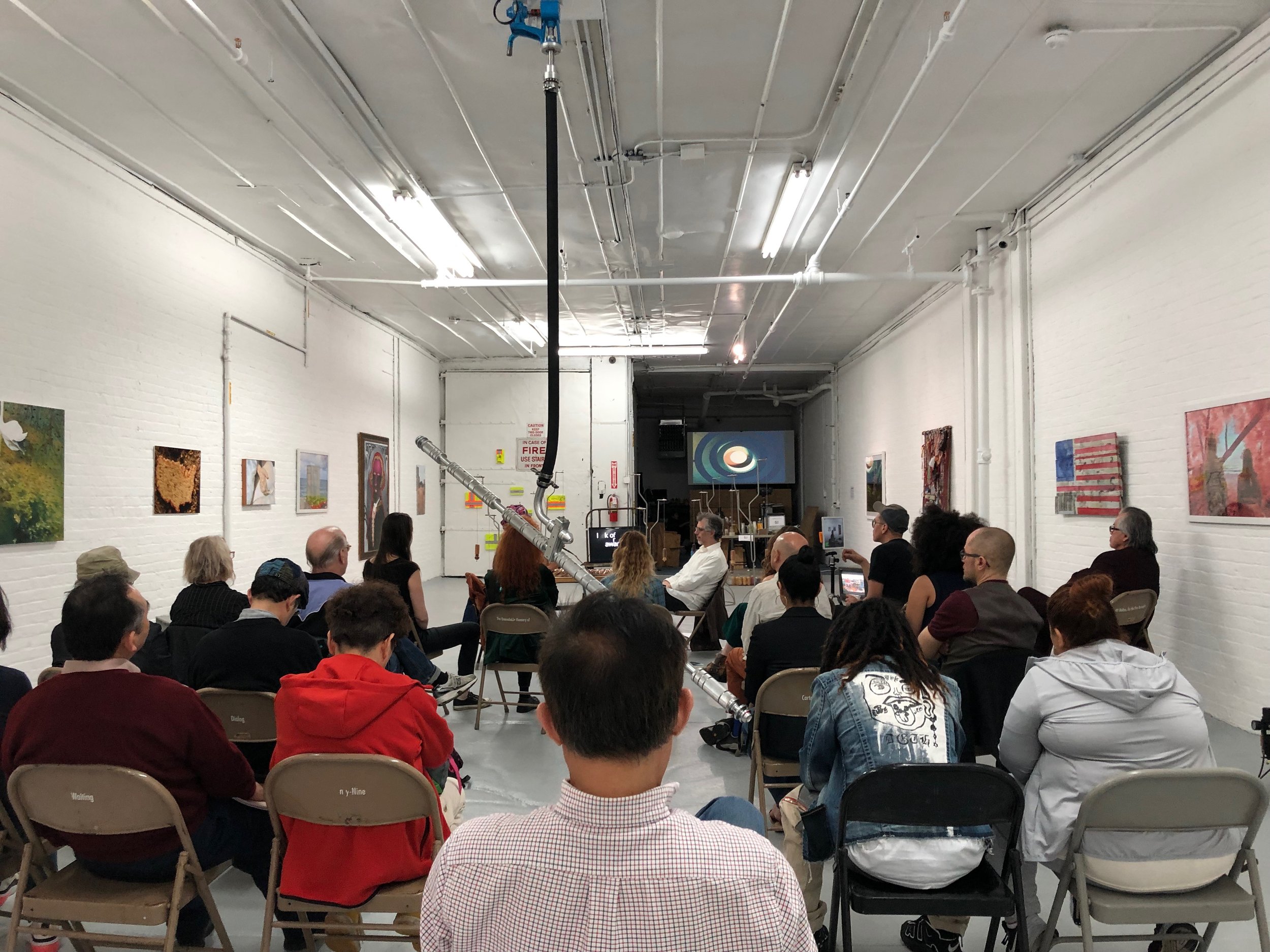WhiteBox Harlem
Saturday, May 18 - Thursday, July 4th, 11am-6pm
Screening on Tuesday, May 21, 6-8pm
XFR Collective, in collaboration with Collaborative Cataloging Japan (CCJ), is pleased to partner with WhiteBox Harlem to present a 2-day installation and screening event of works by Japanese video art pioneer, Ko Nakajima. Through a generous Creative Engagement grant from the Lower Manhattan Cultural Council, never-before-published video works by Nakajima have not only been preserved and made accessible for the study of Japanese video art history, but will be made available for public viewing in New York City for the first time.
Nakajima began animation experiments in films with the works, Anapoko (1963) and Seizoki (1964), which were produced with the intention of being presented at the Sogetsu Art Center, an active space for avant-garde art, film, and dance in Tokyo. With the arrival of video and the electronic signal processing technology, Nakajima took interest in the digital processing of film over multiple iterations spanning many years, as seen in the work Biological Cycle (1971-1982). For this presentation XFR Collective and CCJ have digitized two of the six parts of the Biological Cycle, and WhiteBox Harlem will present Parts 1, 2, and 5 across three monitors.
In 1971, artist Ko Nakajima established the video art collective Video Earth Tokyo, and used portable video recorders to document local communities, social life, and performance experiments by the collective with the intention to cablecast locally. The two works from Video Earth Tokyo to be presented have never before been screened. The digital transfers created for this project opens up the unfamiliar history of 1970s Japanese cable access activities and Video Earth Tokyo’s documentary practice.
XFR Collective is a nonprofit that partners with artists, activists, individuals, and groups to lower the barriers to preserving at-risk audiovisual media. CCJ is a nonprofit that supports Japanese experimental film & video.
May 18-25 Exhibition *Indicates newly digitized titles
Projector 1: Mount Fuji
· Ko Nakajima, Mt. Fuji, 1985, video, 20 min.
Projector 2: Early Film Animations
· *Ko Nakajima, Anapoko, 1963, 16mm transferred to digital file, 8:38 min.
· *Ko Nakajima, Seizoki, 1964, 16mm transferred to video, 4:10 min.
Monitor 1: Biological Cycle No. 1
· Ko Nakajima, Biological Cycle No. 1, 1971, video, 6 min.
Monitor 2: Biological Cycle No. 2 & No. 3
· *Ko Nakajima, Biological Cycle No. 2, 1971-1982, 1-inch transferred to digital file, 8:18 min.
Monitor 2: Biological Cycle No. 5
· Ko Nakajima, Biological Cycle No. 5, 1971-1982, video, 8 min.
Monitor 4: Video Earth Tokyo
· *Video Earth Tokyo, A Graveyard and Beggar, 1975, 1/2-inch Open Reel transferred to digital file, 12:10 min.
· *Video Earth Tokyo, Video Earth Tokyo Interviews of Ikeda and Shimoda CATVs, 1971, 1/2-inch Open Reel transferred to digital file, 25 min.
May 21 Screening *Indicates newly digitized titles. Total screening time 37:40.
· *Ko Nakajima, Anapoko, 1963, 16mm transferred to digital file, 8:38 min.
· *Ko Nakajima, Biological Cycle No. 2, 1971-1982, 1-inch transferred to digital file, 8:18 min.
· *Ko Nakajima, Seizoki, 1964, 16mm transferred to digital file, 4:10 min.
· Shokutaku Ressha (Video Picnic), 1975, video, 8 min. (3:45 min. excerpt)
· *Video Earth Tokyo, A Graveyard and Beggar, 1975, 1/2-inch Open Reel transferred to digital file, 12:10 min.
This presentation is made possible in part with public funds from the Creative Engagement grant program, supported by the New York City Department of Cultural Affairs in partnership with the City Council and the New York State Council on the Arts with the support of Governor Andrew Cuomo and administered by LMCC. LMCC empowers artists by providing them with networks, resources, and support, to create vibrant, sustainable communities in Manhattan and beyond.



